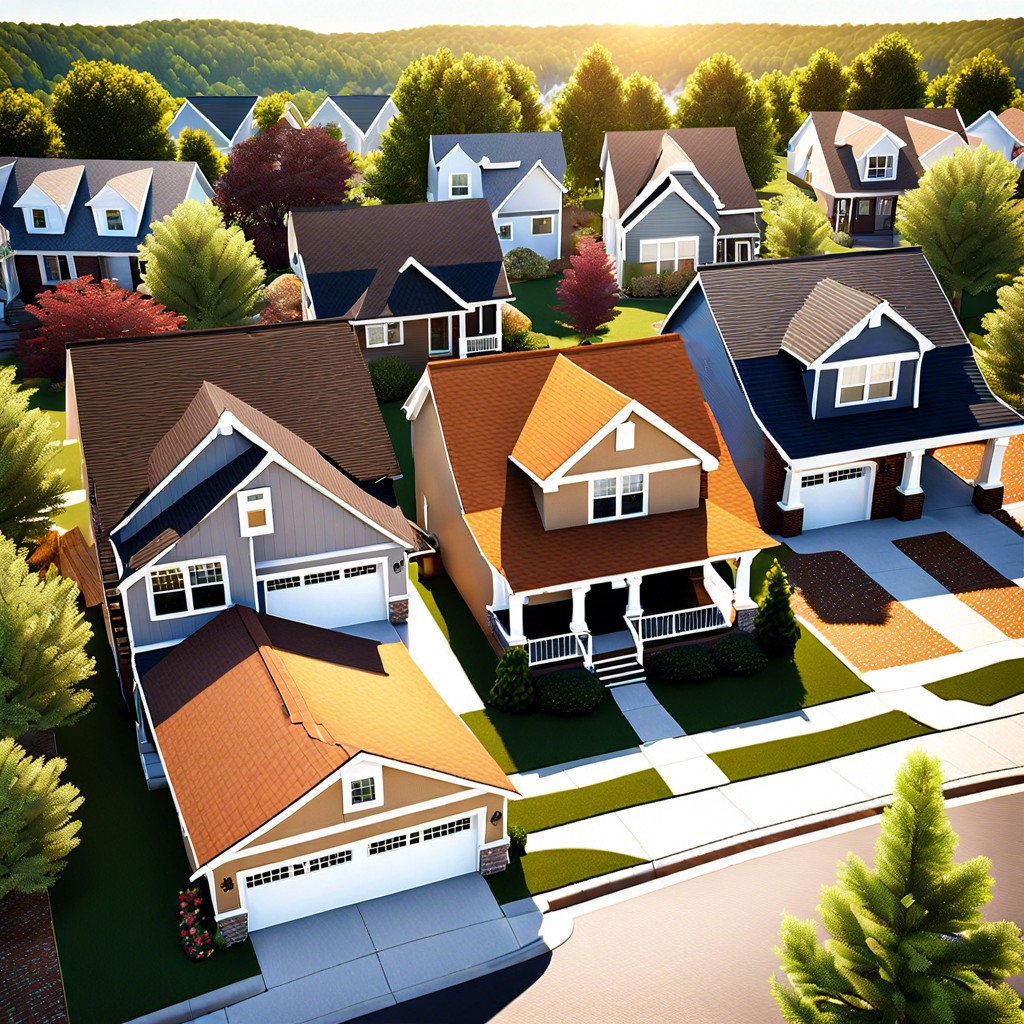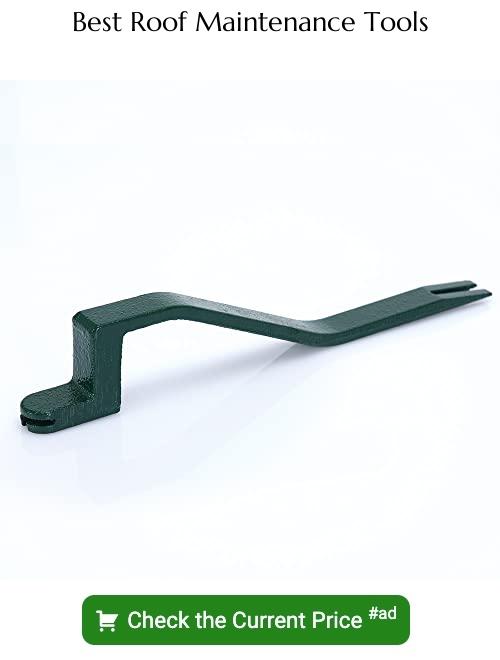Last updated on
Discover what factors affect the lifespan of various roofing materials and learn how to maximize the longevity of your roof.
Key takeaways:
- Factors Affecting Roof Lifespan: Material, climate, installation, roof pitch, local fauna.
- Life Span Estimates for Roof Types: Asphalt shingles (15-30 yrs), metal roofs (40-70 yrs), slate/tile/cement roofs (50-100 yrs), wood shingles (20-40 yrs), synthetic roofing materials (comparable to slate).
- Maintenance Recommendations: Regular inspections, clean gutters, trim branches, monitor attic ventilation/insulation, address repairs promptly.
- Timing for Roof Replacement: Look for signs of damage, consider age, watch for leaks, factor in local climate.
- Professional Resources: Seek assistance from roofing experts, roof inspectors, and reputable contractors.
Factors Affecting Roof Lifespan

Material choices are pivotal; slate, tile, and certain metals can ward off the ravages of time like knights in shining armor, while asphalt shingles tend to wave the white flag sooner.
Climate plays no small part; beating sun, lashing rain, and frosty snow are like nature’s own demolition crew, working overtime on your rooftop.
Installation can make or break your roof’s longevity. A job well done is like fitting puzzle pieces perfectly, whereas a rushed job is akin to a house of cards—one gust and it’s game over.
The pitch of your roof isn’t just about looks; steep ones can shed the elements like water off a duck’s back, while flatter roofs might collect water like a birdbath.
Local fauna, from scampering squirrels to perching birds, can be more than just a nuisance. Their little shenanigans can lead to wear and tear—it’s their version of leaving a mark.
Lastly, keeping up with maintenance is better than a spoonful of sugar—it’s the recipe for a roof’s longevity. Neglect is akin to inviting Father Time to chip away at your home’s crown.
Life Span Estimates for Roof Types
Different roofing materials offer varying levels of durability and longevity. Asphalt shingle roofs, the most common choice for residential homes, typically last between 15 to 30 years. Factors such as climate and maintenance can swing that number lower or higher.
On the sturdier side, metal roofs have a longer life expectancy, often lasting 40 to 70 years. Their resilience to weather and fire makes them a reliable choice for those willing to invest in longevity.
Slate, tile, and cement roofs are in a league of their own, boasting lifespans of 50 to 100 years. These heavy-duty materials shrug off severe weather and can be a once-in-a-lifetime purchase. However, they demand a sturdy structural support due to their weight.
For a greener option, wood shingles and shakes offer natural beauty but require more maintenance. They typically endure for about 20 to 40 years if treated against rot and pests.
Synthetic roofing materials, a newer market player, promise a lifespan comparable to premium materials like slate, but with less weight and often at a more affordable price point.
Each type of roofing delivers a different balance between cost, aesthetics, and longevity. It pays to consider local weather patterns, maintenance commitment, and budget before deciding on the best fit for your home.
Maintenance Recommendations
Regular inspections are the cornerstone of roof longevity. Ideally, homeowners should schedule checks twice a year – once in spring and once in fall. This helps identify potential issues early, like loose shingles or clogged gutters, before they escalate.
Cleaning gutters is not the most glamorous task, but it’s paramount for preventing water damage. Clogged gutters can cause water to backup and seep under roofing materials, leading to rot and leaks. So, roll up those sleeves and give those gutters a good clearing out.
Trimming overhanging branches serves a dual purpose: it reduces leaf buildup and minimizes the risk of damage during storms. Moreover, less debris means fewer chances for moisture-trapping, which can lead to mold and mildew growth.
Monitoring attic ventilation and insulation is another key move. Poor ventilation can cause heat and moisture to build up, shortening the life of your roof by causing mold, mildew, and even warping. Good insulation contributes to a stable temperature, reducing the chance of ice dams forming in colder climates.
Finally, addressing repairs promptly should be a mantra for all homeowners. Small leaks and minor damages can transform into catastrophic issues if neglected. Stitch in time saves nine, as the saying goes, and nowhere is this truer than with roof upkeep.
By keeping up with these maintenance steps, you help your roof stand strong against the elements and time. Remember: a little effort goes a long way in extending the life of your rooftop haven.
Timing for Roof Replacement
Recognizing the right moment to replace a roof can save you a bundle and ward off a headache. Keep an eye out for telltale signs like shingles that are curled, cracked, or absent. Also, a sagging roofline screams “help needed!” like a neon sign. Dark streaks from algae and moss may suggest moisture issues that could compromise roof integrity.
Consider the roof’s age as well. If your asphalt shingle roof is strutting a mature 20-year vibe, it might be time to call the pros. For those with slate or metal overhead, you’ve got the luxury of time, but still, stay vigilant.
Beware of the secret code of leaks. If your attic becomes a rainforest during a storm, it’s more than a subtle hint. Sometimes, it’s just one section waving the white flag, which might only require a repair. But if it’s raining buckets, you’re likely looking at a full roof replacement on the horizon.
Lastly, factor in the local climate’s quirks. Harsh weather conditions—such as scorching sun, hurricane howls, or freeze-thaw cycles—can hasten a roof’s retirement. If your home routinely faces Mother Nature’s wrath, schedule regular inspections to catch any red flags early.
Professional Resources
Navigating the maze of roof maintenance, repair, or replacement is much like piecing together a complex puzzle. For peace of mind and the best results, seeking assistance from seasoned professionals can be a game-changer. Roofing experts bring a wealth of knowledge to the table, from understanding local weather patterns and their effects on roofing materials to being on top of the latest industry standards and technologies.
Roof inspectors, on the other hand, can be invaluable for a thorough assessment of your roof’s condition. They can catch early signs of wear and tear that you might miss, helping you dodge a bullet with potential costly repairs down the road.
Furthermore, when the time for replacement looms, roof contractors with solid track records come into the spotlight. The right contractor will not just sell you a new roof; they will provide a comprehensive solution that fits your specific needs, taking into account factors such as your home’s architecture, the climate, and your budget.
Lastly, remember to verify credentials and seek out reviews or testimonials when selecting a professional. This step goes a long way in avoiding headaches and ensures that your roof gets the best care possible.





